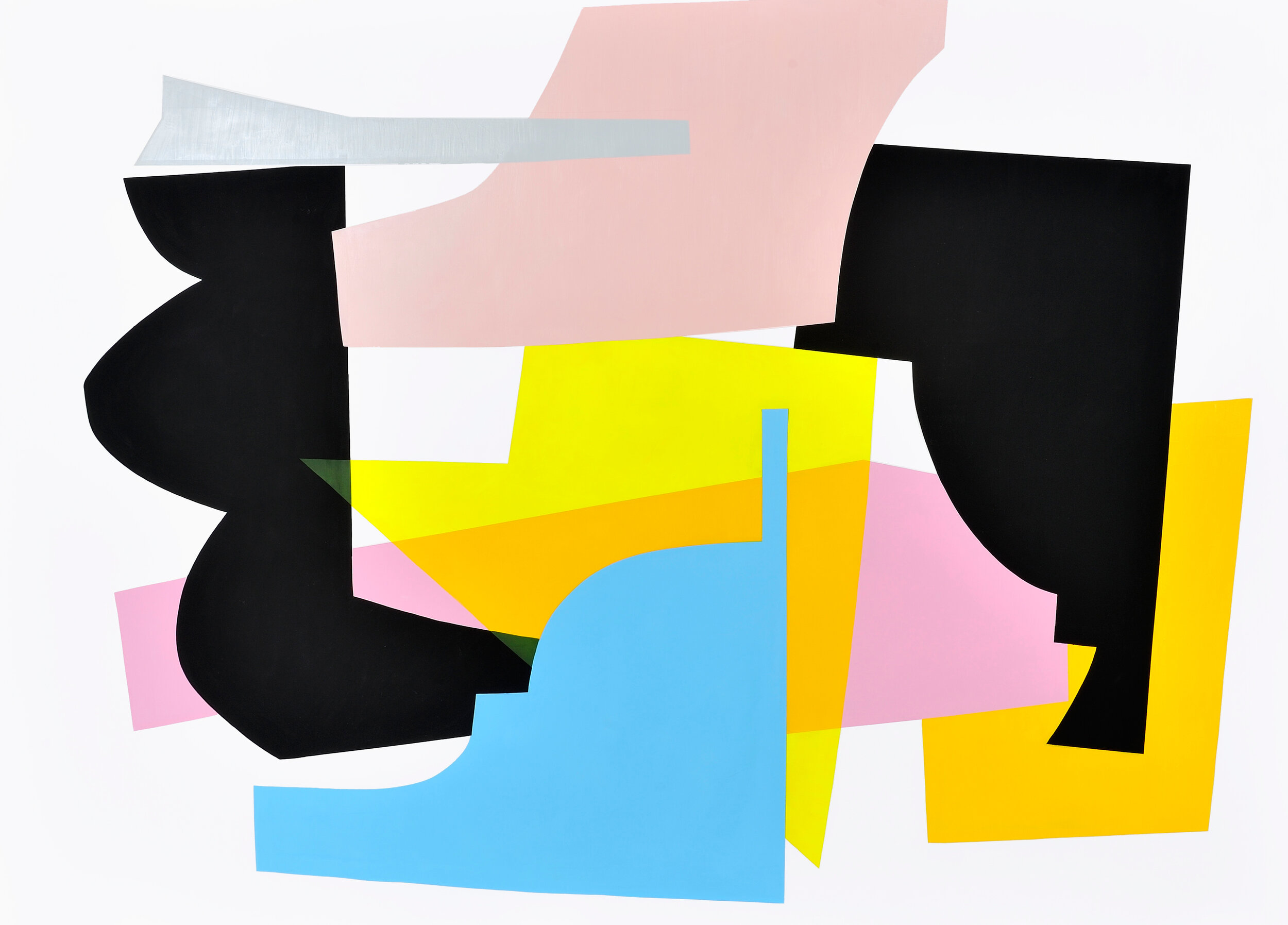Exhibition
Select Reshape, 2014
Spiro Grace Art Rooms, Brisbane
12 - 28 June 2014
‘To learn how to use forms … is above all to know how to make them one’s own, to inhabit them’ Nicolas Bourriaud, 2002
Select Reshape examines a tension between technologically created images and the handmade. Utilising shapes that directly reference pre-existing architectural forms, Simon Degroot abstracts, de-constructs, re-constructs and then re-imagines these forms in an interrogation of space. Employing formal aesthetic devices from a Modernist precedence, he aspires to depict space in a new way.
Degroot is aiming to represent the subtlety and poetry that exists within an effectively designed architectural space. These works stand as an exploration of three-dimensional form that has been reassembled in two dimensions. He continually endeavors to retain the sculptural and spatial qualities of the entities he references during a development and translation from the sketchbook to the canvas.
As with many abstract painters, Degroot is attempting to subvert the literal and figurative to create a “sense” or a “feeling” of space. When reading the works in this purely formal way, cognitive thinking is dismissed and a sense of collective familiarity is summoned. This is most apparent in his largest work in which Degroot references local architecture and the built environment. He desires for the image, through the transformative abstraction process, to still preserve a feeling of its origins.
‘The selecting and reshaping of architectural form although technically abstract, aims to retain a “sense” of the familiar - it is this translation process I find interesting’ Simon Degroot, 2014
This familiarity is also linked to the playfulness that is apparent in his work. Even though there is a rigorous conceptual base to his paintings, on a different level his work has a non-exclusionary playfulness reminiscent of a child’s drawing or collage, and the colourful shapes left on the floor.
As technology become more accessible and advanced, so has the process employed by architects, designers and craftsman in generating their work. It is obvious then, that the process utilised to create these works is conceptually important. Prints, paintings, collage; each discusses a different relationship between technology and the handmade. It is important to the artist that, as with crafts such as carpentry, the work should look finished and polished but that his creative process is still apparent.
Degroot approaches his painting as a craft; there is no taping or projecting involved in the creation of the curves and straight lines. Rather, they are drawn and coloured by hand in a reclamation of craftsmanship. The saturation of colour and sharp edges also contribute to this handmade feeling. It is a testament to his skill that without close examination, the lines appear smooth, and the colour even. However, it is important to Degroot that through the small imperfections in colour and line, the mark of the artist is still retained.
Two processes have been utilised in creating these abstractions. The first is a method which is built up organically: Degroot puts the first shape on the canvas, and then using transparencies he can find the optimum positioning for the shape that is to be painted directly above it. Degroot also uses transparency in some of the shapes themselves, in order to multiply and create new shapes in the overlaps. His background in commercial printing is apparent here, as the layering becomes reminiscent of an exercise in colour mixing and separation. Each form responds directly to the form (or group of forms) before it – in both shape and colour. There is no end image in mind when he begins a painting, searching simply for compositions that interact seductively. Degroot must decide when a painting is complete as he creates it, constantly asking himself whether the harmony between the formal elements is optimal at every stage. When is the journey complete? One layer too many and the seductive aesthetic qualities he works toward are destroyed.
Two collages, and hang alongside the painted works. The physicality of these overlapping transparent forms reference the computer programs used to create multi-layered images in new-age architecture and design. Where an architect once had to hand draft and re-draft, he now has computer programs/tools to build up, and take apart, plans by layer until the product is finished and the image is “flattened”. There is also a play on postmodern appropriative theory here: if the paintings and collages are seen together, which is the original, and which is the reproduction?
These two processes metaphorically reference different technologies: analogue and digital. When creating a digital image, each layer can be constantly changed at each stage of the process. One can even receive a finished image on a digital screen and edit it further at the level of the medium itself, as when Degroot creates imagery in collage. However, an analogue image is older technology. The image is built up in layers, transmitted, transformed, and cannot again be manipulated at that medium level, similar to the organic layering process Degroot utilises. Once the image becomes flattened and merged, it cannot be edited again.
The screen is perhaps the most pertinent concept explored in these images. Screens surround us, presenting the human experience on a two-dimensional plane. They have changed the way in which we understand reality. Unlike Modernist abstraction, Degroot is not searching for universal truth. Rather, he utilises these formal processes of abstraction to dissect and examine ideas of perception on a base physical level - a personal response to a technological twenty-first century zeitgeist.
Marisa Georgiou
